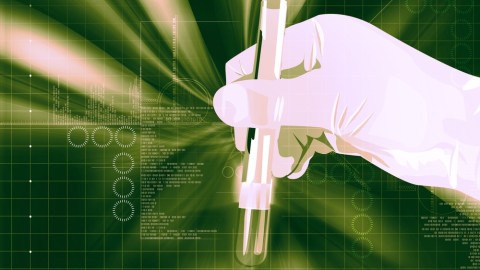Honey, I Shrunk the Doctor!

Researchers have found a way to shrink the size of the medical lab to the size of a microchip, using advances from nanotechnology to pave the way for radically new approaches to medical treatment and diagnosis. Medical labs the size of microchips, which reduce all the components of a typical lab operation – from pipettes to beakers to test tubes – to the size of a microchip-sized wafer of glass or plastic, make it possible to perform rapid, accurate diagnostic tests with almost impossibly small test samples. In many cases, all it takes is a single drop of blood. Instead of outsourcing this blood work to a lab, you will be able to do it on the spot in just a matter of a few minutes. In a best case scenario, researchers will be able to detect cancer earlier than ever before — as well as recreate and then model human physiological processes at the microchip level.
As people become desensitized to the use of DIY medical lab testing from everything from pregnancy results to diabetes results, it’s increasingly clear that medical labs on a microchip are the wave of the future. As researchers point out, the new test techniques are so accurate that they are the equivalent of finding a fine grain of sand in a 1,700-gallon sand pile. This means that, with the shrinking of the medical lab to micro proportions, it may be possible to test a single drop of blood to see if it contains HIV. It will also be possible to screen for a wide range of chromosome mutations that cause a range of cancers – and then begin treatment earlier than ever before.
Technology is beginning to change the world of medicine in new ways, making it an imperative to recognize how fields like nanotech and biotech can influence the future of healthcare by shifting analysis to the molecular level. Shrinking medical labs to the size of microchips lead inevitably to the next level of miniaturization: the ability to create basic human physiological processes at the micro-level. Take, for example, one plan at Harvard to re-create human respiratory processes on a chip. What does it mean when researchers are able to create living, breathing lungs using microelectronics know-how? The FutureMed program at Singularity University hints at other futuristic possibilities, like medical nanbots in our bloodstream and the ability to print 3D organs on-demand.
There are obviously ethical concerns, given that these same labs-on-a-chip are still expensive and, therefore, limited in use. In the event of a major disease outbreak, for example, who would have first priority in the diagnostic testing process? Would testing become a privilege of the 1% of society? Not only that, these same labs-on-a-chip are so powerful that they could prove useful in predicting susceptibility to certain genetic diseases. What are the limits that we are willing to accept in the use of medical and genetic data? Are there certain things that we shouldn’t test for?
The creation of a medical lab on a chip is important for several reasons, most notably because it creates a tangible link between Moore’s Law and medical innovation. In other words, Moore’s Law may hold the promise not only to enhanced computing power, but also to significant breakthroughs in medical innovation. As suggested by economist Eric Brynjolfsson and technology expert Andrew Metcalfe, gains in information and communications technology (ICT) are now starting to power a wide range of innovations that had never before been thought possible. If the pace of innovation appears to be accelerating, you’re not mistaken. We’ve moved from the flat part of the growth curve to the steep, exponential part of the curve — and that means that the types of medical innovations over the next 18 months may look nothing like anything we’ve ever seen before.




